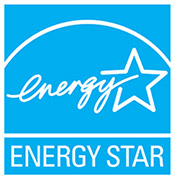Quality matters when hiring for a big project. Call a Best Pick now!
Discussed in Part 1, the structure and material of windows and doors can affect their ability to insulate your home. But, homeowners often face a dizzying array of terms and labels that classify the energy efficiency of these products.
Below are some important terms that explain some of the jargon in the window and door markets.
LEED for Homes
LEED stands for Leadership in Energy and Environmental Design, an organization that promotes “green” building designs. LEED for Homes promotes environmentally friendly home designs by rating homes based on their design and construction.
To get your home certified as a LEED home, you have to obtain points in eight different categories. With the right materials and installation procedure, energy-efficient windows and doors can increase your overall LEED rating. To learn more about the LEED for Homes program and the home energy rating system, visit the U.S. Green Building Council.
Energy-efficient labels
 When buying windows and doors, look for ones with the ENERGY STAR label. These products are known to reduce energy costs by seven to fifteen percent over their traditional counterparts.
When buying windows and doors, look for ones with the ENERGY STAR label. These products are known to reduce energy costs by seven to fifteen percent over their traditional counterparts.
ENERGY STAR is a government program responsible for identifying energy-efficient products available for consumers, and its label ensures that the windows and doors you are buying are truly energy efficient.
Along with the ENERGY STAR label, you will want to examine the National Fenestration Rating Council (NFRC) label found on your product for the following five measurements:
U-Factor
The U-factor measures how well a window or door insulates your house. U-factor numbers range from 0.25 to 1.25, and a lower number indicates that a product provides better insulation.
To help lower their U-factor, windows may have a Low-E coating, which is a thin layer of metal applied to the glass. The coating is almost invisible and is standard in windows for most new homes. A second and even a third layer can be applied to windows to lower the U-factor. A low U-factor is especially important in colder climates, where poor insulation can drive up energy bills.
Solar Heat Gain Coefficient (SHGC)
The Solar Heat Gain Coefficient (SHGC) measures how well a window or door blocks the heat from sunlight. SHGC ranges from 0 to 1, but you will typically find numbers between 0.25 and 0.80.
Normally, when looking for the best SHGC, the lower numbers are better; however, if you live in a colder climate, look for a higher SHGC rating. A higher SHGC means the product is better at collecting solar heat and contributing that heat to your home. For warmer climates, a lower SHGC means the window or door is better for blocking heat gain and keeping your house cooler.
Visible Transmittance (VT)
While the U-factor and SHGC measure how heat interacts with the glazing on your windows, Visible Transmittance measures the amount of light that comes through your windows. When you add more glazing to your windows, the VT decreases.
VT is measured on a scale of 0 to 1, and you will typically see values from 0.20 to 0.80. If the VT drops below 0.40, everything you see through the window will appear gray. If you want a lot of sunshine to come through your windows, pick a higher VT; but consider your options wisely since sunshine can fade furniture, carpet, and flooring.
Air Leakage (AL)
Air Leakage measures how quickly air escapes through joints or cracks in a window or door. A lower AL number equals less air leakage.
The standard value is 0.3 cf·m/ft². The air leakage rating is important because openings in windows and doors can allow moisture to enter your home and create mold, which could lead to health issues. Moreover, properly sealed windows and doors can save homeowners money on heating and cooling bills by better preserving the home’s interior temperature.
Condensation Resistance
Condensation Resistance measures a window’s resistance to moisture buildup. Condensation Resistance is rated on a scale from 0 to 100. Look for a higher number for windows with a high resistance to buildup, especially in wet or humid climates.
If you would like to find out the NFRC rating for your current windows and doors, visit the NFRC online directory to search for your products.
Choosing the right windows and doors for your home may be daunting, but with a little information, you can find the best products to fit your needs.
Once you install your new energy-efficient windows and doors, all you have to do is enjoy the improvement in your energy bill and the look and feel of your home.


























